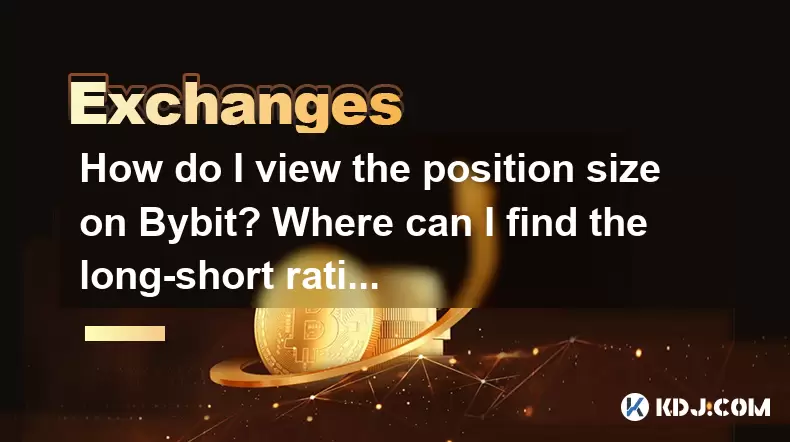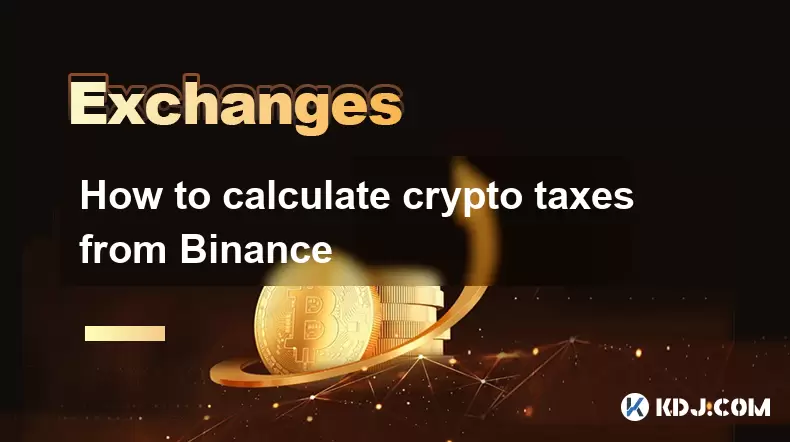-
 Bitcoin
Bitcoin $117500
2.15% -
 Ethereum
Ethereum $3911
6.19% -
 XRP
XRP $3.316
10.79% -
 Tether USDt
Tether USDt $1.000
0.01% -
 BNB
BNB $787.2
2.24% -
 Solana
Solana $175.2
4.15% -
 USDC
USDC $0.9999
0.00% -
 Dogecoin
Dogecoin $0.2225
8.40% -
 TRON
TRON $0.3383
0.28% -
 Cardano
Cardano $0.7868
6.02% -
 Stellar
Stellar $0.4382
9.34% -
 Hyperliquid
Hyperliquid $40.92
7.56% -
 Sui
Sui $3.764
7.63% -
 Chainlink
Chainlink $18.48
10.66% -
 Bitcoin Cash
Bitcoin Cash $582.1
1.88% -
 Hedera
Hedera $0.2601
6.30% -
 Avalanche
Avalanche $23.33
4.94% -
 Ethena USDe
Ethena USDe $1.001
0.02% -
 Litecoin
Litecoin $122.3
2.04% -
 UNUS SED LEO
UNUS SED LEO $8.969
-0.27% -
 Toncoin
Toncoin $3.339
0.86% -
 Shiba Inu
Shiba Inu $0.00001287
4.30% -
 Uniswap
Uniswap $10.43
7.38% -
 Polkadot
Polkadot $3.861
5.08% -
 Dai
Dai $1.000
0.02% -
 Bitget Token
Bitget Token $4.513
3.41% -
 Monero
Monero $267.7
-6.18% -
 Cronos
Cronos $0.1499
4.14% -
 Pepe
Pepe $0.00001110
5.15% -
 Aave
Aave $284.9
8.28%
How do I view the position size on Bybit? Where can I find the long-short ratio data?
Bybit users can view their position size in the 'Positions' tab and check the long-short ratio in the 'Market' tab to gauge market sentiment and manage risk effectively.
May 18, 2025 at 09:08 am

Introduction to Bybit and Position Sizes
Bybit is a popular cryptocurrency exchange known for its advanced trading features, including futures and perpetual contracts. One of the essential aspects of trading on Bybit is understanding your position size, which refers to the amount of a particular asset you are holding in your trading account. Knowing your position size is crucial for effective risk management and strategic trading. In this article, we will explore how to view your position size on Bybit and where to find the long-short ratio data, which is vital for understanding market sentiment.
Accessing Your Position Size on Bybit
To view your position size on Bybit, you need to navigate to the appropriate section within the trading interface. Here is a detailed guide on how to do it:
- Open the Bybit website or app: Log in to your Bybit account using your credentials.
- Navigate to the trading section: Once logged in, click on the 'Trade' tab at the top of the page to access the trading interface.
- Select the desired market: Choose the cryptocurrency pair you are interested in, such as BTC/USD or ETH/USD.
- Go to the 'Positions' tab: On the trading interface, you will see several tabs at the bottom. Click on the 'Positions' tab to view your current positions.
- View your position size: Under the 'Positions' tab, you will see a list of all your open positions. The position size will be displayed alongside other details such as entry price, mark price, and unrealized P&L.
By following these steps, you can easily access and monitor your position size on Bybit, ensuring you stay informed about your trading activities.
Understanding Position Size and Its Importance
Understanding your position size is essential for several reasons. Firstly, it helps you manage risk effectively. By knowing how much of an asset you are holding, you can calculate your potential gains or losses and set appropriate stop-loss orders. Secondly, position size is crucial for implementing trading strategies. Whether you are a scalper, day trader, or swing trader, knowing your position size allows you to adjust your trades according to your strategy and market conditions.
Where to Find the Long-Short Ratio Data on Bybit
The long-short ratio is another critical piece of information for traders, as it provides insights into market sentiment. The long-short ratio shows the proportion of traders who are holding long positions (betting on price increases) versus those holding short positions (betting on price decreases). Here is how you can find the long-short ratio data on Bybit:
- Open the Bybit website or app: Log in to your Bybit account.
- Navigate to the trading section: Click on the 'Trade' tab to access the trading interface.
- Select the desired market: Choose the cryptocurrency pair you want to analyze.
- Go to the 'Market' tab: On the trading interface, you will see a 'Market' tab. Click on it to access various market data.
- Find the long-short ratio: Within the 'Market' tab, look for the section labeled 'Long/Short Ratio'. This section will display the current long-short ratio for the selected cryptocurrency pair.
By accessing this data, you can gain valuable insights into market sentiment and make more informed trading decisions.
Utilizing Long-Short Ratio Data for Trading
The long-short ratio can be a powerful tool for traders. By understanding the balance between long and short positions, you can gauge the overall sentiment in the market. For example, a high long-short ratio indicates that more traders are betting on price increases, which could signal bullish sentiment. Conversely, a low long-short ratio suggests bearish sentiment, with more traders betting on price decreases.
To utilize the long-short ratio effectively, consider the following strategies:
- Trend confirmation: Use the long-short ratio to confirm the current market trend. If the ratio aligns with your analysis of the market trend, it can provide additional confidence in your trading decisions.
- Contrarian trading: Some traders use the long-short ratio to identify potential reversals. If the ratio is extremely high or low, it may indicate an overbought or oversold market, presenting opportunities for contrarian trades.
- Risk management: The long-short ratio can also help you adjust your risk management strategy. If the market sentiment is heavily skewed in one direction, you may want to adjust your position sizes and stop-loss levels accordingly.
Integrating Position Size and Long-Short Ratio for Better Trading
Integrating your position size and the long-short ratio can enhance your overall trading strategy. By understanding your position size, you can manage your risk effectively. By analyzing the long-short ratio, you can gain insights into market sentiment and adjust your trades accordingly.
Here is how you can integrate these two elements:
- Monitor your position size regularly: Keep track of your position size to ensure it aligns with your risk management strategy. Adjust your position size based on your analysis of the market and the long-short ratio.
- Use the long-short ratio to inform your position size decisions: If the long-short ratio indicates strong bullish or bearish sentiment, you may want to adjust your position size to capitalize on the trend or protect against potential reversals.
- Combine technical analysis with market sentiment data: Use technical indicators and chart patterns in conjunction with the long-short ratio to make more informed trading decisions. This holistic approach can help you identify high-probability trading opportunities.
Frequently Asked Questions
Q1: Can I view my position size on Bybit's mobile app?
Yes, you can view your position size on Bybit's mobile app by following the same steps outlined for the website. Simply open the app, navigate to the trading section, select your market, and go to the 'Positions' tab to see your position size.
Q2: How often is the long-short ratio data updated on Bybit?
The long-short ratio data on Bybit is updated in real-time, ensuring that you have the most current information available to make your trading decisions.
Q3: Can the long-short ratio be used for all cryptocurrency pairs on Bybit?
Yes, the long-short ratio data is available for all cryptocurrency pairs offered on Bybit. You can access this data for any pair you are trading to gain insights into market sentiment.
Q4: Is it possible to customize the display of position size on Bybit?
Currently, Bybit does not offer customization options for the display of position size. However, the platform provides a clear and user-friendly interface that makes it easy to view and monitor your position size.
Disclaimer:info@kdj.com
The information provided is not trading advice. kdj.com does not assume any responsibility for any investments made based on the information provided in this article. Cryptocurrencies are highly volatile and it is highly recommended that you invest with caution after thorough research!
If you believe that the content used on this website infringes your copyright, please contact us immediately (info@kdj.com) and we will delete it promptly.
- SNEK, Cardano, and the Contributor's Conundrum: A Meme Coin's Fight for Recognition
- 2025-08-08 16:30:12
- Toshi Crypto's Wild Ride: Rally, Demand Slump, and What's Next
- 2025-08-08 16:30:12
- Ethereum, Staking Yields, and DeFi Exposure: A New Era for Investors?
- 2025-08-08 15:10:12
- Unilabs Pumps MIA, Binance Coin Bouncing Back, and Ethereum's Bearish Blues
- 2025-08-08 15:10:12
- Ethereum's Wyckoff Markup and Market Rotation: A New Era?
- 2025-08-08 15:30:12
- Ethereum, Vitalik Buterin, and the Overleveraged Game: A Balancing Act
- 2025-08-08 15:30:12
Related knowledge

How to use margin trading on Poloniex
Aug 08,2025 at 09:50am
Understanding Margin Trading on Poloniex

How to use advanced trading on Gemini
Aug 08,2025 at 04:07am
Understanding Advanced Trading on GeminiAdvanced trading on Gemini refers to a suite of tools and order types designed for experienced traders who wan...

How to deposit USD on Bitstamp
Aug 07,2025 at 05:18pm
Understanding Bitstamp and USD DepositsBitstamp is one of the longest-standing cryptocurrency exchanges in the industry, offering users the ability to...

How to use the Kraken Pro interface
Aug 08,2025 at 09:57am
Understanding the Kraken Pro Interface LayoutThe Kraken Pro interface is designed for both novice and experienced traders seeking a streamlined experi...

How to find my transaction ID on Gemini
Aug 08,2025 at 12:50am
Understanding the Transaction ID in Cryptocurrency ExchangesA transaction ID (TXID) is a unique alphanumeric string that identifies a specific transfe...

How to calculate crypto taxes from Binance
Aug 08,2025 at 07:56am
Understanding Cryptocurrency Taxation on BinanceCalculating crypto taxes from Binance requires a clear understanding of how tax authorities classify d...

How to use margin trading on Poloniex
Aug 08,2025 at 09:50am
Understanding Margin Trading on Poloniex

How to use advanced trading on Gemini
Aug 08,2025 at 04:07am
Understanding Advanced Trading on GeminiAdvanced trading on Gemini refers to a suite of tools and order types designed for experienced traders who wan...

How to deposit USD on Bitstamp
Aug 07,2025 at 05:18pm
Understanding Bitstamp and USD DepositsBitstamp is one of the longest-standing cryptocurrency exchanges in the industry, offering users the ability to...

How to use the Kraken Pro interface
Aug 08,2025 at 09:57am
Understanding the Kraken Pro Interface LayoutThe Kraken Pro interface is designed for both novice and experienced traders seeking a streamlined experi...

How to find my transaction ID on Gemini
Aug 08,2025 at 12:50am
Understanding the Transaction ID in Cryptocurrency ExchangesA transaction ID (TXID) is a unique alphanumeric string that identifies a specific transfe...

How to calculate crypto taxes from Binance
Aug 08,2025 at 07:56am
Understanding Cryptocurrency Taxation on BinanceCalculating crypto taxes from Binance requires a clear understanding of how tax authorities classify d...
See all articles

























































































